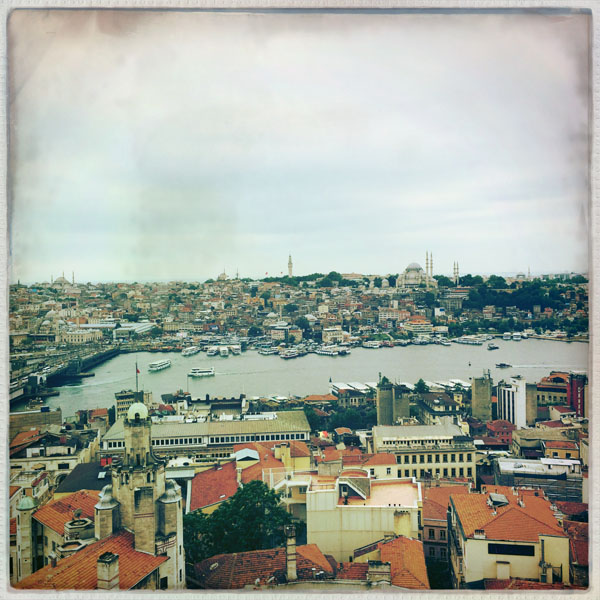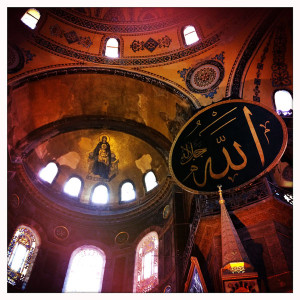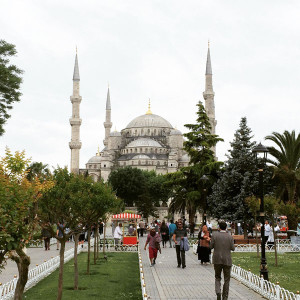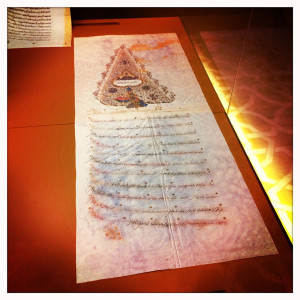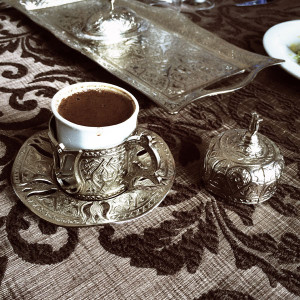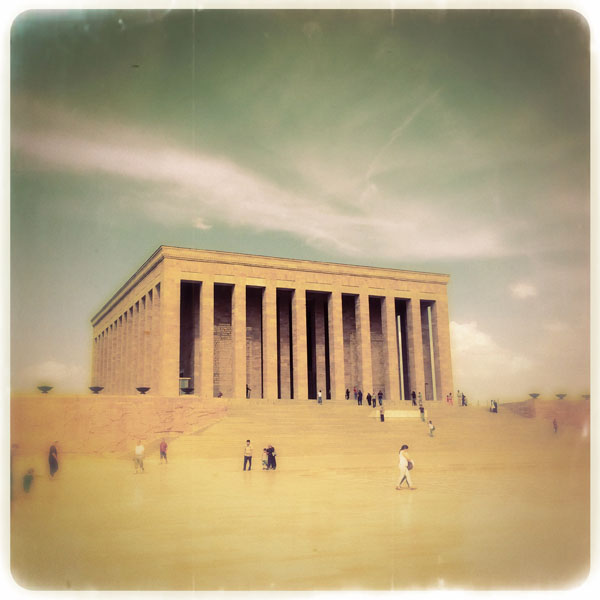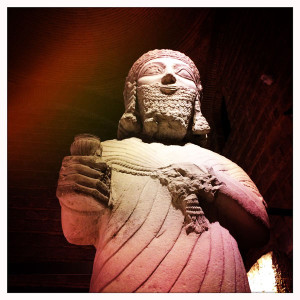Travel special: a whistlestop tour of Ankara and Istanbul, Turkey
Despite living in Europe for years, where cheap flights across the continent are two a penny, as my plane landed in Istanbul, I wondered to myself why I had never visited Turkey.
Straddling two continents and thousands of years of history, of empires and legends, with its reputation for bustle and bazaars, incredible food, strong coffee and sweet tea, romantic cruises on the Bosphorus and more, it seemed somewhat ridiculous that I’d never even got close to visiting the famous city. So when the chance arose to visit the historic, cultural capital (Istanbul) and the country’s actual capital, Ankara, I jumped at the chance.
Now it’s Istanbul, not Constantinople…
Recommending which sights to visit in Istanbul is hard. It would take repeated visits to truly take in all the city has to offer, and with a population estimated at close to 15 million, there’s plenty around. But there are a few “greatest hits” which are a must for first-time visitors. If you want to discover echoes of Byzantium or Constantinople, these sites are essential.
We’ll start at the famous Hagia Sophia or Aya Sofya, which in its own way, tells the story of the city.
This beautiful, important historical site has had religious buildings on its turf since 360 AD, but the current structure was built by the Byzantine emperor in 537. Consecrated as a Greek Orthodox basilica, it was the seat of the Patriarchate of Constantinople until 1453 (excusing a few years as a Roman Catholic Church in the 1200s). After Constantinople was seized by the Ottomans however, the building was subjected to great pillaging and later being converted into a mosque.It remained that way for nearly 500 years, until it was secularized and opened as a museum in 1935. The history there is astounding and many famous mosaics remain in varying states of decay. Allow yourself a few hours to drink it in.
In recent years, Turkey’s reputation as a secular, Westernized state has been questioned by some who feel the country has become more Islamic under the rule of the the Justice and Development Party (AK Party), led by President Recep Tayyip Erdogan. Critics cry authoritarianism and point to the secular state envisioned by the republic’s founder, while supporters point to the AK Party’s string of unbroken electoral victories and observe such a drift is natural as an estimated 98 percent of Turkey’s 74 million inhabitants are, in fact, Muslim. Whatever your take on the country’s politics, mosques are an essential part of Istanbul and the calls to prayer that spread across the city from the minarets will soon seize your ear.
One of the mosques that most worth a visit is the picturesque Blue Mosque, which at least one guidebook branded “Istanbul’s most photogenic building.” Built in the 1600s,the huge complex is designed to perfection and — once you’ve removed your shoes — you should take a wander inside to look at its magnificent interior.
Mosques are an essential part of Istanbul and the calls to prayer that spread across the city from the minarets will soon seize your ear.
Closer to history
Once the world’s dominant power, the Ottoman Empire at its peak stretched from Algiers to deep into Iraq and those years of history produced acres and acres of artifacts and documents. Istanbul offers the chance to get a little closer to some of this history, namely via a trip to The Ottoman Archives of the Prime Minister’s Office.
Housed in a new US$150-million complex in the Kadýthane district, this huge collection of treats and treasures is open to researchers and foreigners, but appointments to gain an ID card to access the building must be made in advance. If you make that effort however, you will be rewarded — more than 4,000 years of history are housed here, with a total of 95 million files and documents currently being sorted through and digitized. Of course, speaking Turkish would help, but this site is a true trip into the past.
The scope of the work that’s going on here is truly mind-boggling and if you’re lucky enough to find a friendly face who wants to talk about the work, you will be shocked at some of the documents being processed. A visit here will focus on the site’s museum in all likelihood and the beauty and quality of some of the aged documents that have been discovered will take your breath away. Highly recommended.
Another spot that should be on your list is the Galata Tower, a medieval stone tower in the charming Galata/Karaköy quarter.
While there’s not much to the tower itself, the tip of the cone, straining above its surroundings, is well worth a visit. First, for its beautiful 360-degree panoramic views across the city, and second, for its excellent restaurant. With large windows looking out on the city, dining in the tower is a wonderful experience — and they serve a good, traditional Turkish coffee to help with your digestion.
Next up — the Grand Bazaar. Hailed by many over the years as the bustling heart of the city, where foreigners haggle with friendly locals to secure a bargain, its reputation preceeds it… but here’s my advice. Don’t go. Unfortunately, it disappoints.
Perhaps once upon a time, this beautiful, huge, epic building was filled with the handmade wares of traders from across the world, who mystified locals and foreigners alike with their inspiring products and sales pitches. Sadly, today, it is a tourist trap, where the deeper you go into the labyrinth complex, the more expensive things become.
My advice? If you go, purchase things closer to the entrances, they will be around 40 percent cheaper than the prices set deeper inside (although no haggling on the edges, prices are fixed).
Perhaps once upon a time, this beautiful, huge, epic building was filled with the handmade wares of traders from across the world, who mystified locals and foreigners alike with their inspiring products and sales pitches. Sadly, today, it is a tourist trap.
What should be a beautiful mix of chaos and colour is unfortunately a little lacking in charm.
Final tips for Istanbul? Take a lot of time to gorge yourself on Turkish cuisine (Iskender kebabs in particular, I’d say) and sweet treats and take in an Efes beer or raki (Turkish aniseed spirit) on one of Taksim Square’s colourful sideroads. And most of all, soak up the history and explore on foot and public transport — the traffic is insane.
A little soul
Ankara, Turkey’s capital, is a city that, frankly, lacks a little soul. Located in Central Anatolia, with a population of roughly 4.5 million, it’s the centre of government and therefore also a commercial and business centre. Situated on a hill, it has two key sites of great interest that are worth a visit — one of key importance to the modern republic, the other crucial to understanding the millennia of history that carved marks on this land.
Imposing yet calm, the mausoleum and shadow of Turkey’s founding father, Mustafa Kemal Atatürk, looms large in the capital and the hill upon which it is based is encircled by flower shops. Here, before the colourful flourishes of bouquets and petals, Turks stop to buy flowers, to lay later at the resting place of the Republic’s father. Like practically every 21st-century citizen too, they also take a shedload of selfies — at the entrance, in front of the mausoleum and standing before the legendary figure’s crypt, the list is endless. It’s a tourist site that draws huge numbers oTurks, not just foreigners, and (if you can stand the crowds) would be best visited on November 10, the anniversary of Atatürk’s death.
The founder of modern Turkey hangs heavy over the city. Ankara’s standing today as the capital of the country is a direct consequence of the late president’s decision to base the independence movement here and his desire to create “direct government by the Assembly.”
The site of Anýtkabir itself is imposing, yet calm. Atop a hill, and encircled by Peace Park, the famous building housing the tomb itself (known as the “Hall of Honour”) is flanked by a vast ceremonial courtyard, which has held hundreds of thousands of Turks on days of national importance. The approach to the monument and the courtyard is a long walkway, lined on both sides by rows of lions. Before entering the Hall of Honour, ensure you stop to visit the towers, statues and museums, which collect artifacts of Atatürk’s and tell the story of his importance and the site’s creation. Once you’ve marvelled at the great condition of the buildings and sculptures (the site was completed back in 1953), approach the main building with the rest of the locals.
The founder of modern Turkey hangs heavy over the city. Ankara’s standing today as the capital of the country is a direct consequence of the late president’s decision to base the independence movement here and his desire to create “direct government by the Assembly.”
As for the tomb itself. Exhibitions on topics and themes of Atatürk’s rule circle the mausoleum itself, which is inaccessible. Visitors are left to stare at a screen at the guarded entrance to the tomb, with cameras flicking back and forth, streaming images back to the onlookers. But in fact, it’s within the smaller exhibitions stands that one can understand more about Turkey’s first president and his influence on the modern nation today. Some of the notices can be a little propagandist and one-sided, but there’s some interesting titbits waiting to be discovered.
I was amazed to learn for example that it was Atatürk who introduced surnames to the people. On June 21, 1934, six years after the country’s alphabet reform, a law was passed requiring that every citizen adopt and use a surname. While the young nation’s Christian and Jewish citizens already used surnames, most Muslims generally did not use Western-style naming conventions. Literally meaning “Father of the Turks,” Mustafa was given his surname by the Parliament, which promptly banned its use by any other citizen.
Elsewhere in Anatolia’s Ankara (which despite its modern incarnation is a truly historical place dating back centuries) there is another spot that’s well worth a visit — the incredibly well-stocked Museum of Anatolian Civilizations.
Opened, remodelled and repaired in 1968, the site is a feast of artifacts, some dating back to approximately 8000 BC. Its pedigree is such that it was chosen as the first “European Museum of the Year” back in 1997.
If you’re a history buff, its treasures are in truth too much to detail. They encompass Hittite, Greek, Hellenistic, Roman, Byzantine and Ottoman parts of history. Some of the items are truly astounding — for example, there are bronze, clay and stone tablets detailing and certifying old practices. One tablet I viewed, dating back to the 19th and 18th century BC, detailed the divorce of a “native Anatolian” and “Assyrian trader” and established “that men and women had equal rights to divorce and remarry, and choose his/her spouse.”
As well as King Midas’ skull, there are Roman sculptures and works of art, ancient cauldrons, Ottoman treasures and imposing stone carvings. There are so many items to marvel at in fact that if you pay attention, you can sit in the museum’s gardens and suddenly realize you’re seated next to a Roman column dating back two millennia. Well worth a visit.
Finally, should you have a couple more hours in Ankara, take a trip to the CER Modern. Located in what used to be an old train depot, this new gallery has a nice café with a terrace and collates modern artworks from artists across Europe and Asia.
Echoes of empire
What becomes apparent, even after a whistlestop tour of Turkey’s two most prominent cities, is the sheer amount of history and people that have passed over the soil of one of the world’s most strategically-placed countries.
Turkey is as relevant to global, geopolitical issues as ever before — it not only shares a border with Europe, it faces Syria, Iran and Iraq too — as it was when part of the Roman, Byzantine or Ottoman empires.
Modern-day Turkey may face challenges on its frontiers, but visiting its cities, wandering the streets and absorbing its history will help you realize that our years now are just a couple of brushstrokes on a wider canvas encapsulating thousands and thousands of years.
Editor’s note: the author visited Turkey with seven other journalists, as part of an outreach programme to Argentine journalists, paid for by the Turkish government.
@URLgoeshere
Originally published in the Buenos Aires Herald, on Sunday, June 7, 2015,
in the On Sunday supplement’s “Travel” section.
Link: http://www.buenosairesherald.com/article/190937/straddling-the-ages.
All photos copyright of James Grainger.

